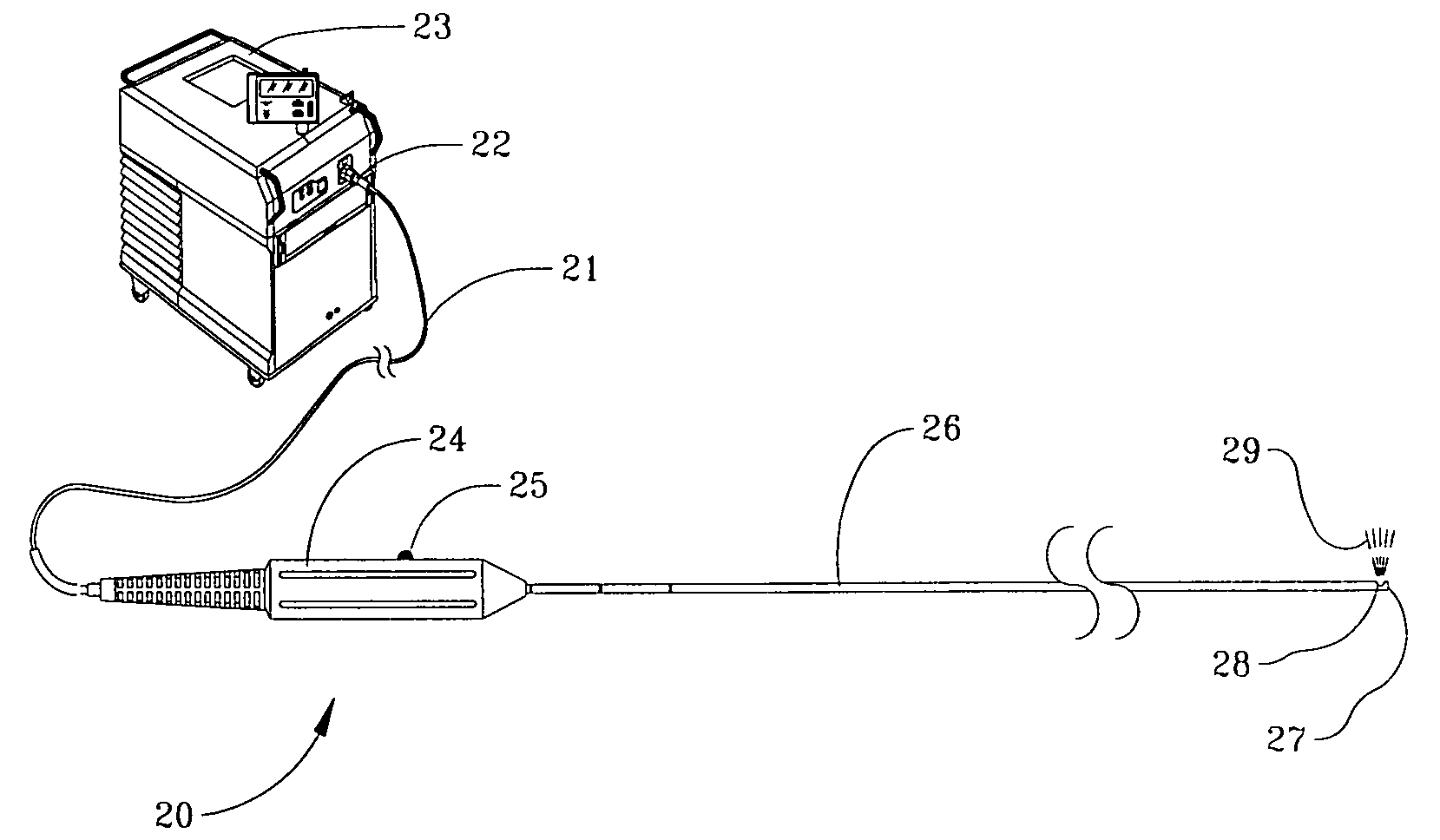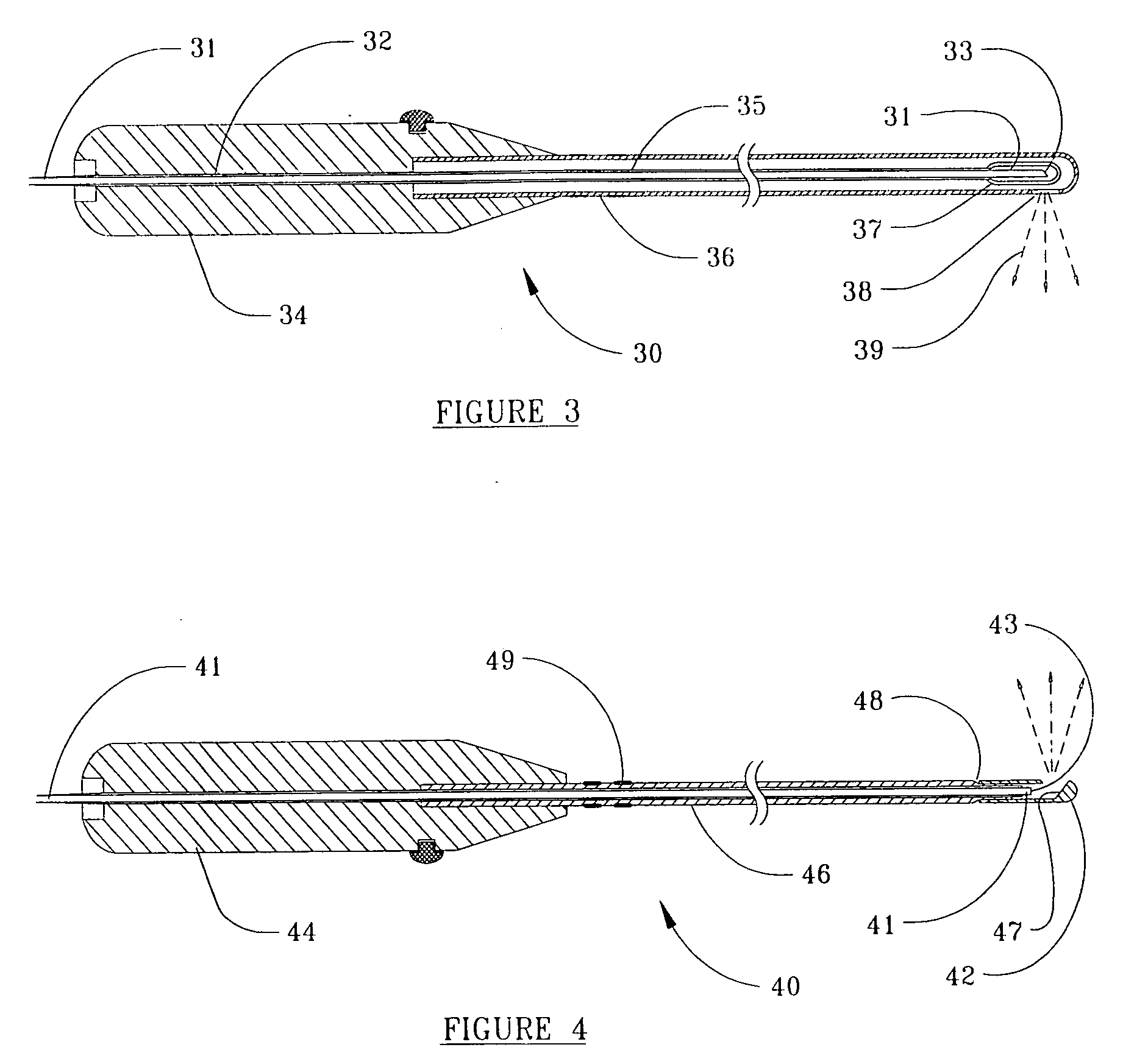Economical, two component, thermal energy delivery and surface cooling apparatus and its method of use
a cooling apparatus and thermal energy technology, applied in the field of thermal energy delivery devices, can solve the problems of inability to afford devices, inability to economically provide cooling to the endothelial lining of internal ducts, blood vessels, hollows, etc., and achieve the effect of avoiding cross contamination and infection
- Summary
- Abstract
- Description
- Claims
- Application Information
AI Technical Summary
Benefits of technology
Problems solved by technology
Method used
Image
Examples
example
[0081]A group of medical devices were constructed according to embodiments shown in FIGS. 1 and 3. Specifications for selected features are presented below in Table I.
TABLE IDeviceSpecificationLaser Energy Emitting Component:fiber optic365 to 550 micron case diameter3 meters in lengthsheath materialmedical grade stainless steel orPEEKsheath outside diameter1.5 to 2.33 mmemitter configurationBeveled, prism-like optical fibercapillary tubeFused silicapreferred laser typeDiodeCoolant Retainer / Balloon:cannula length10 to 75 cm(handpiece to balloon)cannula outside diameter2 to 3 mmballoon materialsiliconeballoon diameter (inflated)5 to 80 mmport(s)Luer configuration
[0082]The meetings and sizes of the example devices vary by the particular medical application. The example devices provide a reusable higher-cost thermal energy delivery component and a relatively lower cost, disposable coolant component. These devices can be made non-detachable as a single use, disposable device, or detachab...
PUM
 Login to View More
Login to View More Abstract
Description
Claims
Application Information
 Login to View More
Login to View More - R&D
- Intellectual Property
- Life Sciences
- Materials
- Tech Scout
- Unparalleled Data Quality
- Higher Quality Content
- 60% Fewer Hallucinations
Browse by: Latest US Patents, China's latest patents, Technical Efficacy Thesaurus, Application Domain, Technology Topic, Popular Technical Reports.
© 2025 PatSnap. All rights reserved.Legal|Privacy policy|Modern Slavery Act Transparency Statement|Sitemap|About US| Contact US: help@patsnap.com



